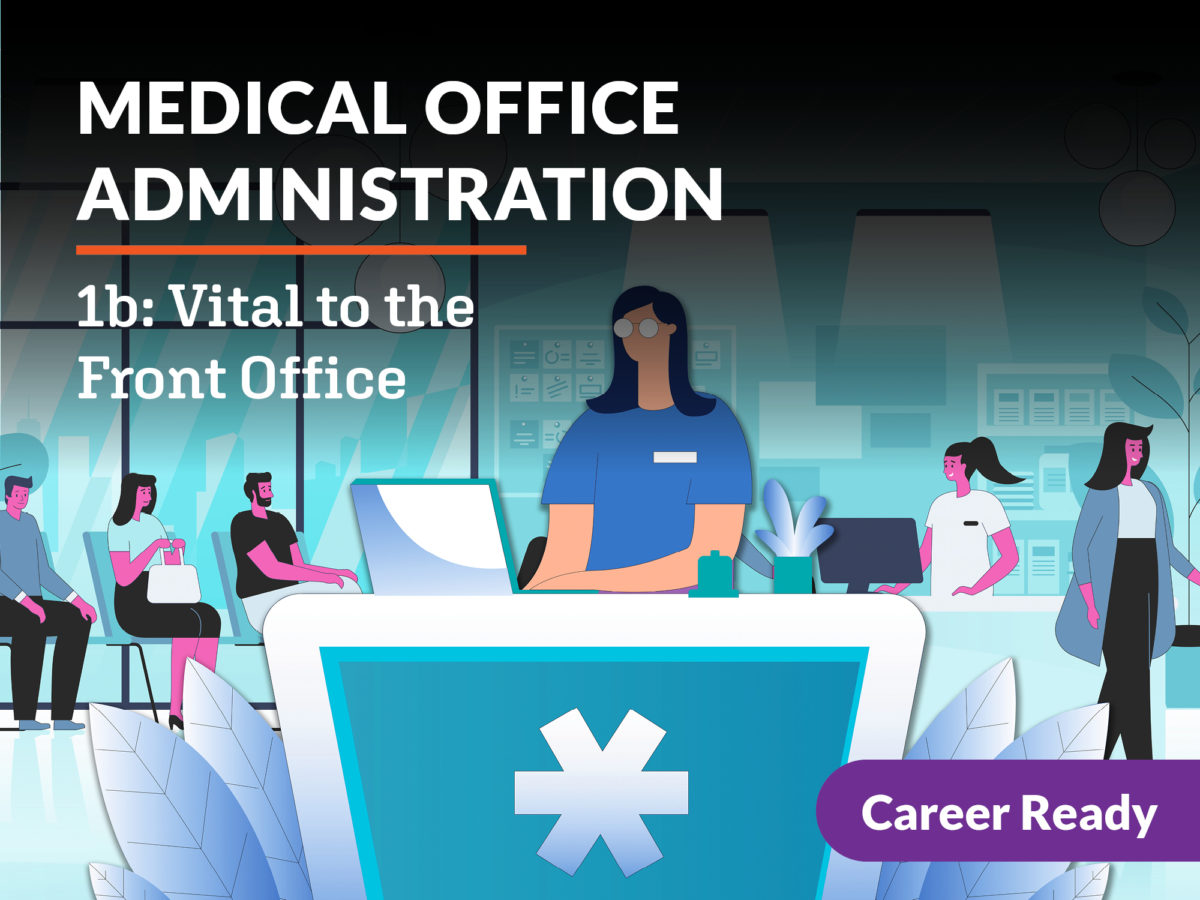Exactly how to Start an Effective Occupation in Medical Administration: A Novice's Overview
Exactly how to Start an Effective Occupation in Medical Administration: A Novice's Overview
Blog Article
Finest Practices in Medical Administration for Improving Effectiveness and Reducing Costs
In the ever-evolving landscape of healthcare, the quest of ideal practices in medical administration is extremely important for enhancing effectiveness and curbing costs. By incorporating innovative modern technologies such as digital wellness records and telemedicine, health care suppliers can enhance operations and enhance patient treatment. Nonetheless, innovation alone is not a cure all; maximizing source allowance and cultivating collective communication amongst treatment groups are similarly essential (medical administration). As organizations strive to balance high quality and expense, what approaches should be prioritized to achieve these twin goals? The responses to these inquiries hold the key to an extra lasting medical care system.
Leveraging Advanced Innovation
In today's rapidly advancing medical care landscape, leveraging advanced technology is no longer optional yet essential for reliable medical management. The integration of digital solutions right into health care systems has actually transformed the method facilities operate, improving processes and enhancing individual treatment. Electronic Health Records (EHRs) are crucial, giving comprehensive person information that can be accessed promptly by authorized employees, hence lowering redundancy and lessening errors. By streamlining individual info, EHRs eliminate the need for difficult documentation and assist in seamless communication amongst medical care carriers.
Telemedicine is one more technical improvement that has changed individual interaction. It supplies benefit for both patients and medical care experts by allowing remote consultations, which can reduce the demand for in-person brows through and maximize consultation scheduling. In addition, telehealth systems can extend health care accessibility to rural or underserved locations, bridging spaces in care shipment.
In addition, making use of Expert system (AI) and artificial intelligence is becoming increasingly common in anticipating analytics, allowing for very early discovery of prospective wellness problems and even more informed decision-making. These modern technologies, when integrated successfully, can boost diagnostic accuracy and individualize client therapy plans, eventually leading to improved healthcare results and operational performance.
Optimizing Source Allowance
Effective resource allowance is essential for maximizing the effectiveness of clinical administration. By purposefully managing sources such as personnel, equipment, and finances, health care centers can dramatically enhance their functional efficiency, improve client end results, and minimize unnecessary expenses. The very first step in maximizing source allocation includes conducting a comprehensive analysis of existing possessions and recognizing locations where resources may be underutilized or overextended. This evaluation ought to be data-driven, utilizing metrics and analytics to inform decision-making processes.
Prioritizing resource appropriation based upon person demands and solution demands is crucial. This includes lining up resources with high-demand areas, such as emergency situation care or specialized therapies, to make sure timely and reliable client treatment. Carrying out flexible staffing versions can also maximize labor resources by readjusting workers allocation in feedback to varying person volumes. In addition, embracing telemedicine and various other technological options can alleviate physical source restraints by providing different avenues for patient-provider communications.
Funds need to be meticulously kept an eye on and allocated with tactical insight to sustain both temporary operational needs and long-lasting institutional objectives. This consists of investing in training programs that boost staff expertises and adopting energy-efficient techniques that lower functional costs (medical administration). Ultimately, an optimized resource allotment method cultivates a lasting medical care setting that is receptive, reliable, and monetarily sensible
Streamlining Operations Procedures
When health care centers goal to boost functional effectiveness, simplifying operations procedures becomes a pivotal focus. Efficient process lessen redundancy, get rid of unneeded steps, and improve control amongst health care professionals. This approach not just speeds up service delivery yet additionally improves the high quality of patient care.

Following, modern technology combination plays a substantial role in enhancing workflows. Carrying out digital health records (EHRs) and digital physician order entrance (CPOE) systems minimizes paperwork, lessens human mistake, and makes certain details comes to all appropriate employees. Additionally, leveraging telemedicine platforms can simplify individual appointments and follow-ups, reducing the pressure on physical facilities.

Eventually, streamlined process cause cost reductions and improved client complete satisfaction, promoting a more sustainable health care atmosphere.
Enhancing Information Management
Structure upon streamlined workflows, optimizing information monitoring ends up being a crucial element ahead of time healthcare management. Reliable data management systems are important for maintaining exact person documents, improving decision-making, and ensuring conformity with regulative standards. By implementing durable data monitoring options, health care centers can improve the hop over to here quality of person treatment while concurrently decreasing operational prices.
One trick element of improving data management is the combination of sophisticated digital health and wellness record (EHR) systems. These systems facilitate the smooth exchange of patient details across various departments, minimizing replication of tests and decreasing errors. A properly designed EHR system supports information analytics, enabling doctor to recognize trends and make educated decisions relating to patient care.
In addition, protecting person data is critical. Taking on comprehensive cybersecurity procedures, including file encryption and normal audits, guarantees the integrity and privacy of delicate information. This not only secures people but likewise preserves the establishment's credibility.
Purchasing team training is an additional crucial aspect. Enlightening medical care professionals on data administration methods boosts their capacity to effectively use innovation, bring about boosted patient outcomes. To conclude, improving information monitoring via innovative modern technology and extensive training is vital for attaining performance and cost reduction in medical administration.
Fostering Collaborative Communication
An important part in progressing medical management is cultivating collaborative communication amongst health care specialists. Effective interaction is critical for making certain seamless client care, enhancing therapy results, and reducing errors. By motivating open dialogue and coordination across multidisciplinary teams, healthcare companies can improve their operational effectiveness and reduce unneeded costs.
Central to this strategy is the assimilation of communication modern technologies such as electronic health and wellness documents (EHRs) and protected messaging systems, which promote the quick exchange of crucial person details. These tools enable doctor to accessibility and share data in actual time, making sure that all employee are notified and aligned in their decision-making procedures. Routine team meetings and interdisciplinary rounds can further promote a society of partnership and liability.
Training programs concentrated on enhancing interaction abilities are likewise crucial. These programs can assist team develop the capability to convey info plainly and listen actively, hence reducing misunderstandings and cultivating a helpful job environment. In enhancement, adopting standardized interaction methods, such as SBAR (Situation, History, Analysis, Suggestion), can enhance the exchange of information, guaranteeing that essential details are communicated succinctly link and properly. Eventually, promoting joint communication causes boosted healthcare distribution and expense financial savings (medical administration).

Verdict
Including innovative modern technology, such as digital wellness documents and telemedicine, along with maximized source appropriation and structured process processes, is important for improving efficiency in medical management. Reliable information administration and promoting collective communication amongst medical care groups are vital for decreasing redundancies and enhancing care quality. By prioritizing preventative treatment and participating in high quality improvement he has a good point campaigns, medical care companies can accomplish significant cost financial savings and enhanced client results, thus ensuring lasting health care delivery in an increasingly intricate setting.
Report this page